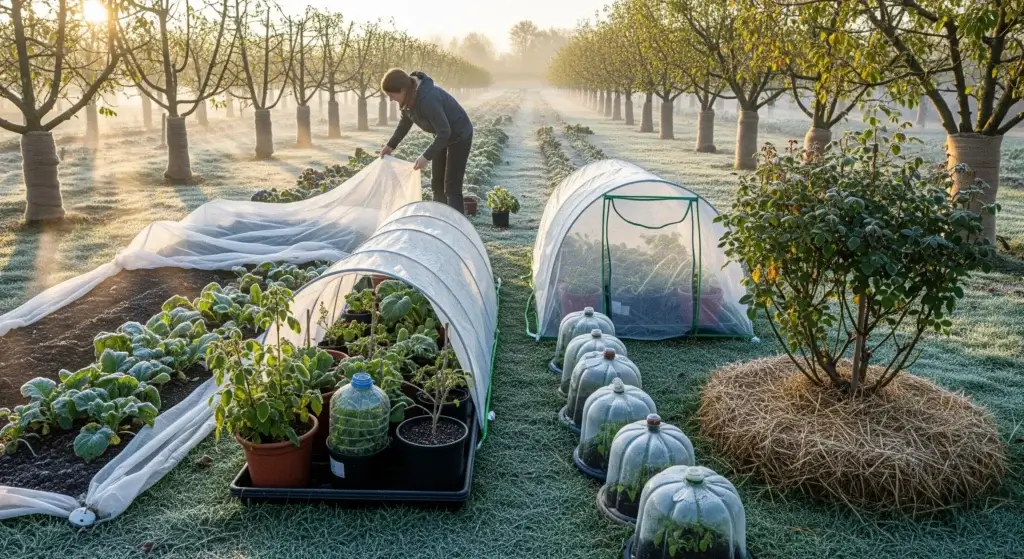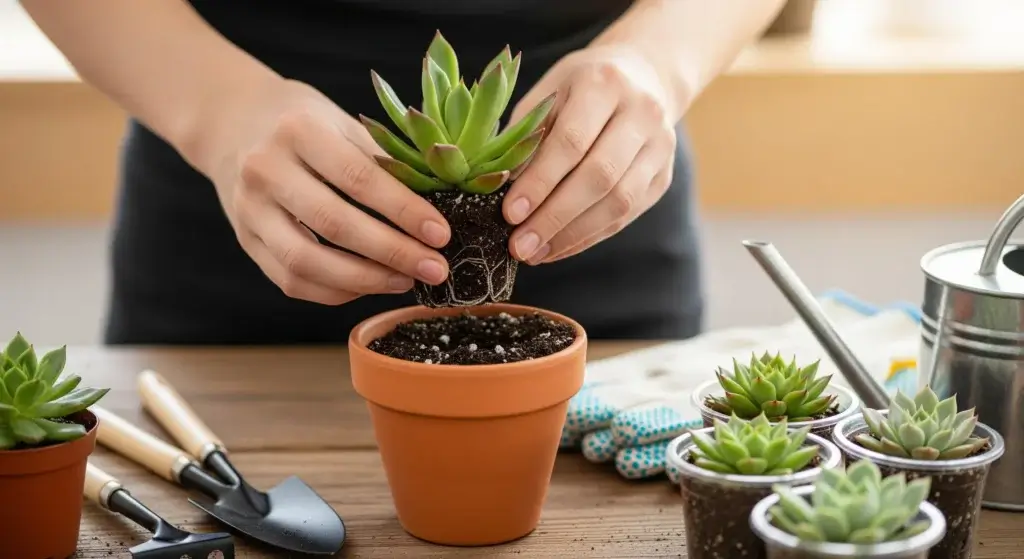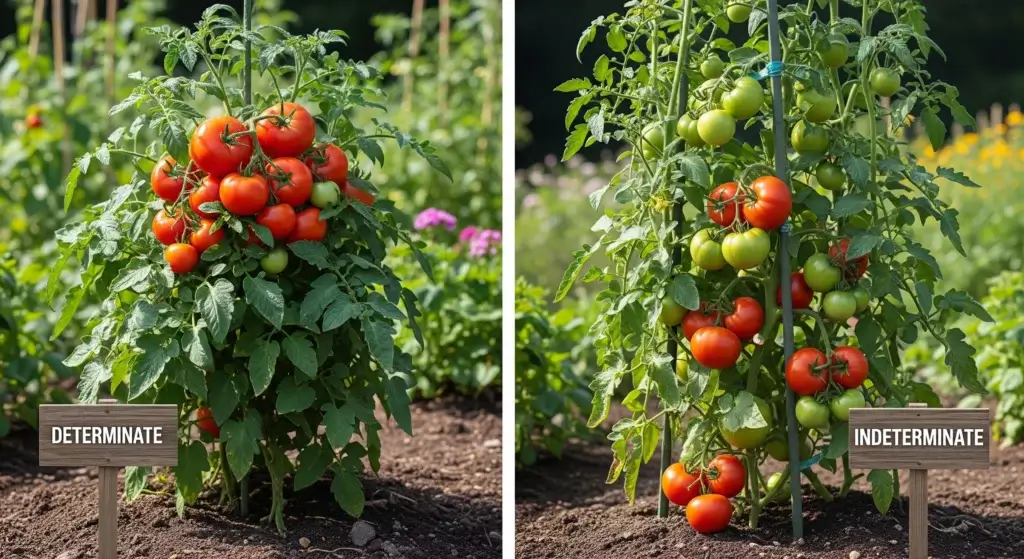
Growing vegetables in pots indoors can be a rewarding and delicious way to enjoy fresh produce year-round.
With the right techniques and equipment, you can successfully cultivate a variety of vegetables in the comfort of your own home.
In this article, we will explore the benefits of indoor vegetable gardening, the essentials for success, and provide tips for choosing the right pots, soil, and light for your indoor vegetable garden.
Benefits of Indoor Vegetable Gardening
Indoor vegetable gardening brings a host of benefits that appeal to both seasoned gardeners and newcomers.
Let’s explore these advantages in more detail:
Year-round harvest
Indoor gardening offers the joy of harvesting fresh vegetables throughout the year, regardless of the weather outside.
This means a continuous supply of homegrown goodness on your table, no matter the season.
- Read also: A Beginner’s Guide: Tips on How to Grow Garlic Indoors
- Read also: DIY Indoor Herb Garden With Grow Lights
Enhanced freshness
The vegetables you grow indoors are picked at their peak ripeness, ensuring optimal flavor, nutrition, and quality.
Unlike store-bought produce that may travel long distances, homegrown veggies retain their freshness and vitality, delivering unmatched taste and texture to your meals.
Space efficiency
Indoor gardening is a space-savvy solution for cultivating veggies, making it accessible to those with limited outdoor space or living in urban environments.
Whether you have a sunny windowsill, balcony, or a dedicated indoor garden room, you can maximize your available space to create a thriving vegetable garden.
Pest control
Compared to outdoor gardens, indoor ones are less prone to pest infestations and diseases.
Thanks to the controlled environment and reduced exposure to external threats, you can minimize the risk of pests and diseases without resorting to harmful pesticides or chemicals.

Essentials for Indoor Vegetable Success
For a successful indoor vegetable garden, you’ll need to ensure you have the right essentials in place. Here’s what you should consider:
Choosing the right pots
When selecting pots for your indoor garden, keep these factors in mind:
- Size: Opt for pots that provide enough depth, typically around 6-8 inches, to allow your vegetable roots to grow well.
- Material: Look for pots made of sturdy materials like ceramic, terra cotta, or plastic.
- Drainage: Make sure your pots have good drainage holes to prevent water from accumulating and causing soil problems.
Selecting the perfect soil
The soil you use is crucial for your vegetables’ health. Here’s what to think about:
- Drainage: Choose soil that drains well to avoid waterlogging, which can harm your plants.
- Nutrient content: Pick soil that’s nutrient-rich and has the right pH balance to nourish your vegetables effectively.
- Organic matter: Consider using soil enriched with organic materials like compost or peat moss to improve its quality and fertility.
Light Needs
Most indoor vegetables need plenty of sunlight. If natural light is lacking, consider these tips for using grow lights:
- Type: Invest in grow lights specifically designed for indoor gardening to ensure they provide the right light spectrum for your plants.
- Intensity: Adjust the brightness of your grow lights based on the needs of your vegetables.
- Duration: Keep your grow lights on for at least 12 hours a day to support healthy growth.
Temperature control
Maintaining the right temperatures is essential for your indoor garden’s success.
Aim for daytime temperatures between 65-75°F (18-24°C) and nighttime temperatures of 55-65°F (13-18°C) to keep your plants thriving.

Best Vegetables for Indoor Pots
When it comes to growing vegetables indoors, certain varieties thrive in pots and containers, making them ideal choices for indoor gardening enthusiasts.
Here are some of the best vegetables suited for indoor pots:
Leafy greens
Leafy greens such as lettuce, kale, and spinach are excellent choices for indoor cultivation.
They require minimal space and grow quickly, making them perfect for small indoor gardens.
These greens are packed with nutrients and can be harvested in as little as 2-3 weeks after planting.
Plus, having fresh greens at your fingertips means you can enjoy salads, sandwiches, and smoothies bursting with flavor and nutrition all year round.
Herbs
Herbs like basil, cilantro, and parsley are popular choices for indoor gardening due to their versatility and ease of cultivation.
These aromatic plants thrive in pots on sunny windowsills or under grow lights.
With proper care, they can provide a steady supply of fresh herbs to enhance your culinary creations.
From seasoning soups and sauces to garnishing salads and pasta dishes, having homegrown herbs adds a delightful touch to your cooking while saving you money on store-bought herbs.
Microgreens
Microgreens are tiny, nutrient-packed versions of leafy greens that are harvested when they are still young and tender.
These miniature greens are incredibly easy to grow indoors and require minimal space and effort.
In as little as 1-2 weeks, you can harvest a crop of microgreens to add a burst of flavor and nutrition to salads, sandwiches, and appetizers.
Plus, they come in a variety of flavors and colors, making them both delicious and visually appealing.

Caring for Your Indoor Vegetable Garden
Caring for your indoor vegetable garden is vital to ensure healthy plants and a plentiful harvest.
Here’s a detailed guide on how to provide the best care for your indoor veggies:
Watering
Give your plants a drink when the top inch of soil feels dry to the touch.
Be sure not to overwater, as this can lead to root rot.
Ensure your pots have good drainage to prevent waterlogging.
Fertilizing
Keep your plants well-fed by fertilizing them regularly with a balanced fertilizer designed for vegetables.
Follow the instructions on the fertilizer package and apply it every few weeks during the growing season.
Avoid excessive fertilization, as it can harm your plants.
Pest and disease management
Stay vigilant for signs of pests or diseases.
Check your plants regularly, paying close attention to the undersides of leaves and stems where pests tend to hide.
If you spot any issues, take action promptly.
You can use organic pest control methods like insecticidal soaps or remove affected parts of the plant to prevent further spread.
Harvesting
Harvest your vegetables when they’re ripe to encourage continued growth and prevent overripening.
Follow the recommended guidelines for each vegetable variety.
Regular harvesting also promotes the production of new flowers and fruits, ensuring a continuous supply of fresh produce from your indoor garden.

- Read also: Balcony to Farm Fresh: DIY Vegetable Garden on a Balcony
- Read also: The Beginner’s Guide: Build DIY Hydroponic Vegetable Garden
Conclusion
Growing vegetables in pots indoors can be a rewarding and delicious way to enjoy fresh produce year-round.
By following the tips and guidelines outlined in this article, you can successfully cultivate a variety of vegetables in the comfort of your own home.
Remember to choose the right pots, soil, and light for your indoor vegetable garden, and to care for your vegetables regularly to ensure the best results.



